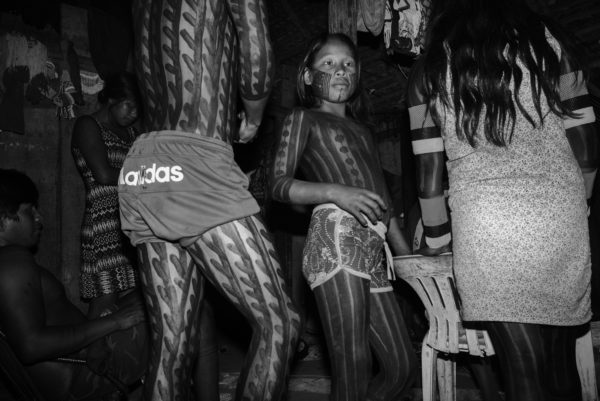In pictures: The Brazilian Amazon in 2019
Since Jair Bolsonaro took office, deforestation and fires have increased, leaving a heavy toll on the people who live in the rainforest

Fires in the Amazon sparked headlines all over the world this summer. But less well covered were the lives of the people who call the rainforest home.
In Brazil, which holds 60% of the rainforest, fires in the Amazon biome rose by 42% in the first nine months of 2019, compared to the same period last year. Fires in Indigenous territories outstripped that, more than doubling in the period from January to September this year compared to 2018.

Photographer Tommaso Protti, accompanied by journalist Sam Cowie, travelled to the Brazilian Amazon to cover the everyday lives of people living in the region.
Produced with the support of the Carmignac Photojournalism Award which funds investigative reportage on human rights issues the world over, Protti’s work looks at the intense violence faced by Indigenous communities in the Amazon, as well as religious festivities, law enforcement and creeping urbanisation in one of the most ecologically significant territories on earth.



Since President Jair Bolsonaro took office, violence against Indigenous communities has increased. Preliminary data released last month by the Missionary Council for Indigenous Peoples (CIMI) released showed a steep increase in the number of Indigenous land invasions in the first nine months of the year to 160, up from 111 in the whole of 2018, and 96 in 2017.

Indigenous organisations in Brazil have spoken of how Bolsonaro’s violent rhetoric against minorities and moves to cutback agencies protecting marginalised communities have exacerbated the problem.
In November, Indigenous land defender Paulo Paulino Guajajara was killed in the Araribóia Indigenous territory in Maranhão state in an ambush by illegal loggers.





Protti, who photographed the Guajajara people in February, told Unearthed that in his five years visiting the Brazilian Amazon, he has noticed the situation on the ground grow more intense.
“All the Indigenous territories I visited have been somehow invaded by illegal loggers and wildcat miners, and people have died,” he said.
“The declarations of this new government have contributed to create a climate of hatred towards Indigenous communities, environmental activists and landless peasants. They are increasingly perceived as barriers for the development. Unfortunately, in the vast majority of the population living in the region there is the idea that nature is not in danger, that there is plenty of it, and above all that it is in their right to exploit and modernize it. The messages of Bolsonaro of an Amazonia open to trade have exacerbated this vision legitimizing those who act illegally.”
The exhibition for the 10th Carmignac photojournalism Award: Amazônia by Tommaso Protti, will be held in Paris at the Maison Européenne de la photographie from December 4th, 2019 to February 16th, 2020
Words: Joe Sandler Clarke




